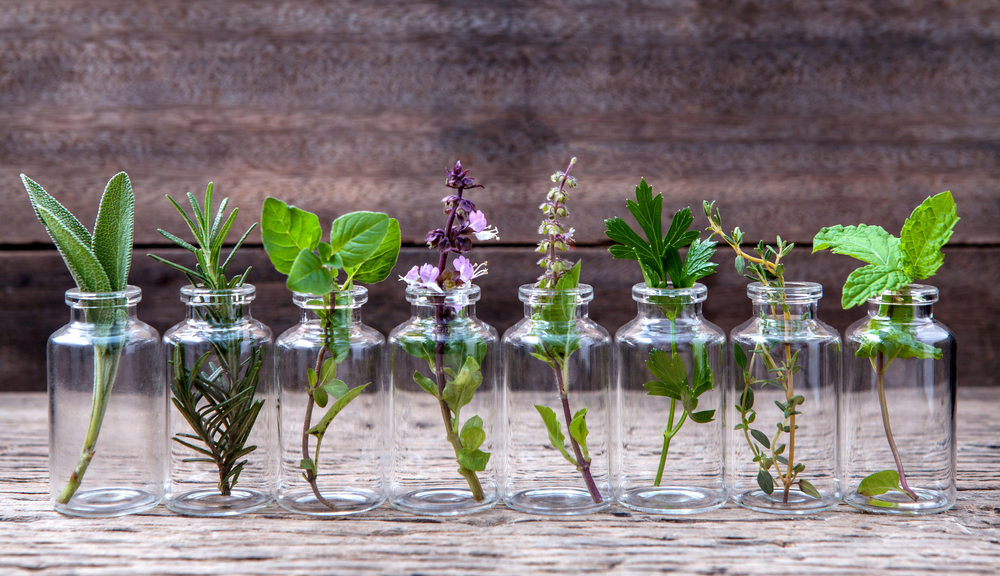Herbs make everything better, while offering great health benefits and enhancing overall health
We love adding herbs to our favorite meals! Desserts, soups, stews, roasts, pastries… You can make yourself a nice cup of tea or repel insects. Handy, right?
Water-grown herbs are brilliant, and they taste incredible. No, water doesn’t “dilute” their flavor and you don’t have to touch dirt all the time.
Seed-grown annual herbs may give you a challenge. You have to sow the seeds in soil and then transfer them to clean water. Soil to water transition is possible but it comes with a high risk.
Grow herbs in water
Water
All you have to do is root herb cuttings in clean water. Chlorinated water destroys plants, so you really need purified liquid. You can also let your water “rest” uncovered for a night. Rainwater works great, too. We all know that spring water is the best! The same goes for well water.
Container
You can use mason jars, glass bottles or even plastic containers. Pick colored containers (bottles) because roots prefer darkness. If you can’t find any amber-colored bottles, feel free to wrap a piece of paper or cloth around the base of your container.
This extra step will prevent algal growth on the walls. Narrow-mouthed bottles and containers support cuttings, keeping them upright. But, be careful, you don’t want the mouth to be too narrow.
Give the roots enough space to breathe. The air should circulate without any trouble.
If your container has a wide mouth, cover the top with nylon or wire netting, make some holes and place your cuttings. Netting keeps mosquitoes away on hot summer days.
Plant cuttings
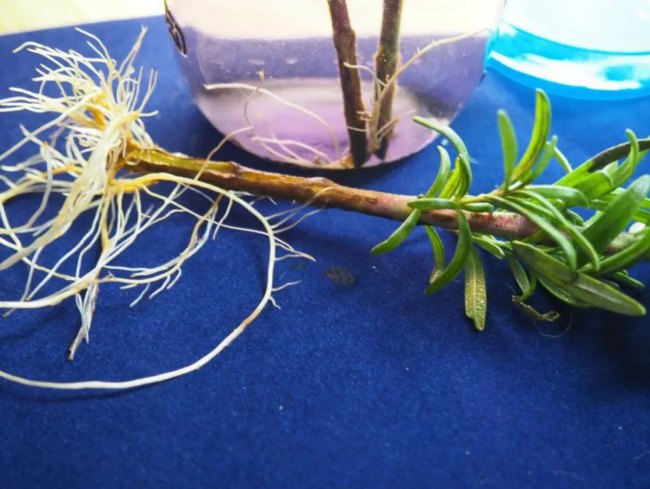
Soft cuttings root right away. You need 6-inch sections and purified water. Wash your herbs in plain water and clip off the lower part of the plant. Remove the lower leaves from the cuttings and trim the tips at the nodes. You shouldn’t have any leaves touching the water as they will rot.
Rosemary cuttings take time to root. Change the water once a week until you notice the first roots. Don’t change the water too often once your plant roots.
If you are rooting willow clippings, steep the branches in warm water overnight to support the process. Add rooting hormone powder for extra help.
10 herbs you can grow in water
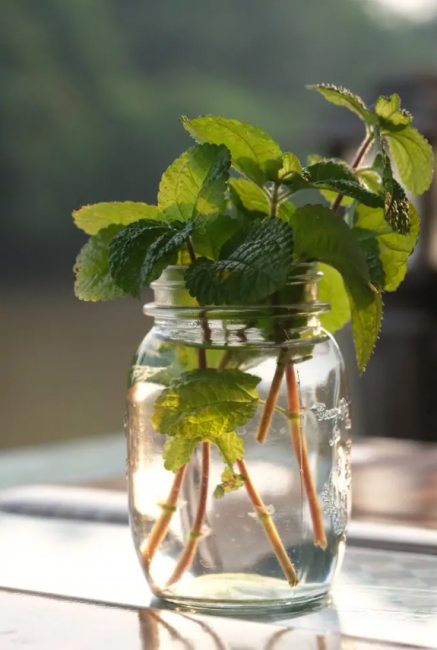
Mint is amazing and people love it for its healing properties. Menthol gives mint its incredible power. It gives you a cool sensation without changing your body temperature.
Place mint clippings in water and watch them root. That’s all!
Peppermint is a natural hybrid of spearmint and aquatic mint also known as water mint. Put the clippings in water enjoy your endless supply of spearmint.
It grows well indoors and makes your food delicious.
Put fresh cuttings in water and use it whenever you need to spice up your food with oregano.
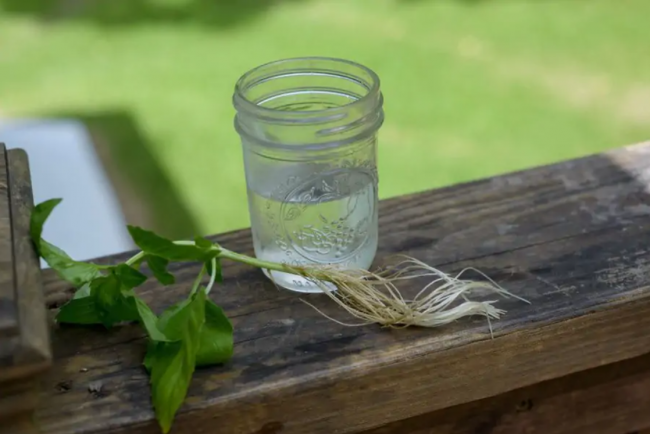
Basil likes warm and light areas. Cut the tips before your basil flowers. If you grow several varieties, growing them in water will help you preserve your collection during winter.
Root a couple of soft sage cuttings in spring. Recipes usually require a small amount of this herb so you don’t need too many clippings. Sage prefers light and aerated areas as it’s prone to mildew.
We add it to tea and other drinks. Place soft clippings in water and keep the container in a warm and light place.
It’s another member of the mint family. We love it in winter and most of you probably add it to hot winter tea. Clip lemon balm chunks in spring and fall and keep the container in a warm place. Be careful, it doesn’t like direct light. Lemon balm roots in 3-4 weeks. Clean the water regularly.
You can also root the clippings when it’s warm outside to avoid mildew. Bring your plants indoors once they are well established.
Place a few cuttings in water in spring. Fall cuttings need more time to root. Tarragon likes warm and bright areas. French tarragon is amazing, and Russian tarragon is milder. You can use it as a green salad.
Take green cuttings as old cuttings won’t sprout easily. You can take the cuttings in mid-spring and even early summer. Don’t take clippings from flowering plants.
Thyme dries fast so you need to place it in water right after cutting it. Spray the clippings with water to keep them moist. Prune the stems regularly to strengthen the tiny branches.

Rosemary needs more time to root. Spring cuttings root faster. Rosemary is a nice indoor plant and it loves sunny spots.
9 houseplants to grow in water
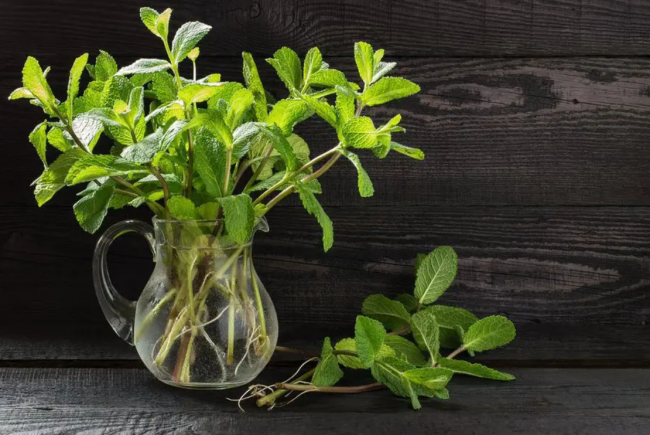
Houseplants root in water, too. This is the perfect method for those who forget to water or overwater their plants.
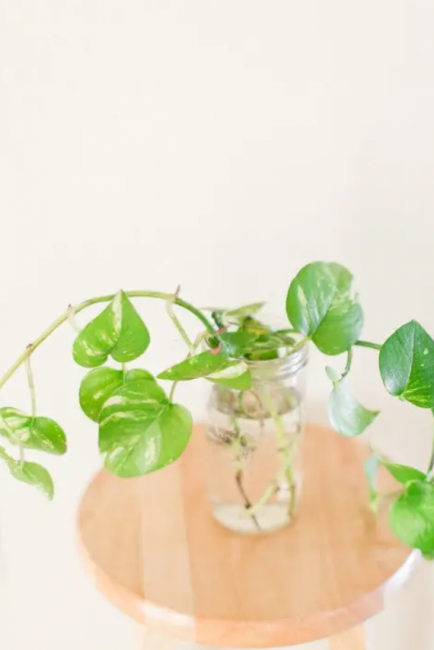
It grows really well in water. Tip cuttings work best. Keep in mind that 2-3 nodes should be submerged in water.
Similarly to pothos, arrowhead thrives best when you cover some of its nodes in water.
Heart-leaved and split-leaved types root well in water. Root 6-8 inch cuttings in water. Be careful, your container needs to support the weight of the tips. Place a small rock inside the container just to make sure it doesn’t tip over.
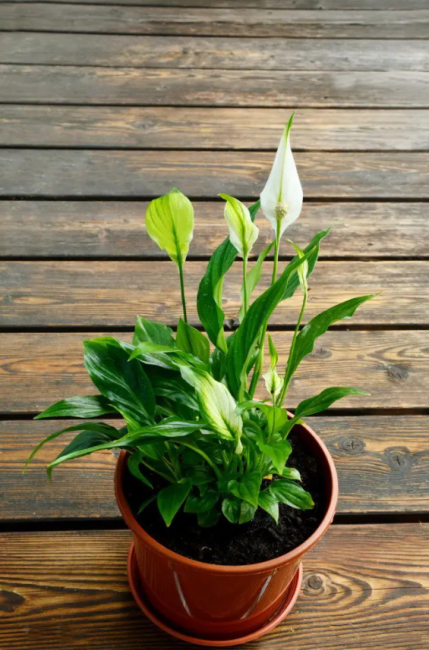
Use an entire plant or a few clippings. Wash off the dirt and put the clippings in water.
It grows really well in water and the silver shade is breathtaking!
Dracaena grows in water. The Chinese lucky bamboo is not actually bamboo. It’s a variety of dracaena. You can also use corn plant (D. fragrans) and Song of India (D. reflexa). Root parts of the cane in water and use containers that support their weight.
- Dieffenbachia (dumb cane)
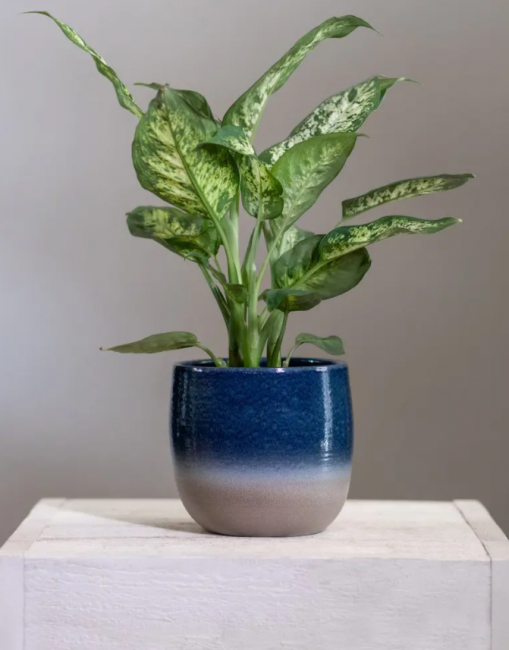
Cut the top and place it in water.
Caution: the sap of this plant may burn your skin.
- Chinese evergreen (Aglaonema)
Put cuttings in pots filled with clean water.
- Chlorophytum (Spider plant, Airplane plant)
Put big plantlets in bowls filled with purified water. Goldfish bowls work best for this purpose. Wash off any dirt before you place the plant in water. Hanging plants grow well in water.
6 vegetables to grow in water
You can grow watercress, water chestnut, wasabi, and lotus in water. But, you can use the same method and grow your favorite veggies, such as lettuce and spinach
The water method works better than soil in some cases.
Hydroponic farmers love it. They start seeds in netted cups and transfer them into beds with a growing medium.
Grow it the same way as lettuce.
Start tomato seeds in individual cups and transfer them into the growing medium. Hydroponically cultivated tomatoes provide high yields.
Grow them as you grow peppers.
Bush-type cucumbers love water. Provide extra support for the climbing varieties.
Celery grows well in water. The perfect supply of clean plants! Cleaning has never been easier.
Feed water-grown plants
Water lacks minerals and essential nutrients common in soil. Your plant needs supplemental nutrition to grow well.
Dilute regular fertilizers in water or use proprietary formulations for hydroponics.
Fertilizers tend to leave residues in the water, so change the water regularly to prevent root burn. Flush your plants and containers regularly.
Hydroponics – growing plants in water and inert media
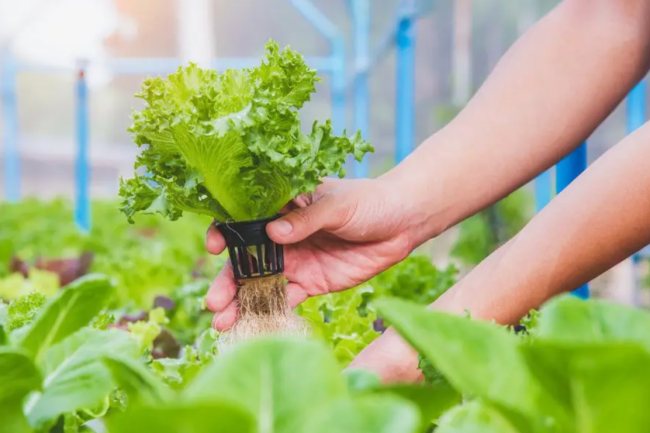
Soil supports plants and offers a great medium for anchoring plant roots. Some plants require strong support and this makes soil a better alternative. Soil locks water and fertilizes, releasing them in a controlled manner.
Add sand, gravel, perlite, vermiculite coconut fiber, and coconut chips to containers to support plants. Rock wool and lightweight expanded clay are great, too.
Types of hydroponic systems
Plants are grown in tubs filled with cocopeat or another absorbent medium that wick up nutrient-packed water from the bottom reservoir. It’s like growing plants in soil and they get nutrients from the water, not the medium.
It’s like growing plants in containers filled with water. The roots are submerged in water but the plant grows in another container that’s partially immersed in the main water container. Some people use Styrofoam sheets with holes to keep the plants in place.
Aquarium pump is used to agitate and aerate the water in the main container. This prevents diseases and protects the roots. Well, you need power to run the system and this may be a disadvantage.
Beds are supplied with a nutrient solution through overhead sprinklers. The root zone gets enough air and the system pumps water for recirculation.
Plants are grown in beds of an inert medium. They are watered by intermittent flooding of the beds with nutrient solutions. The bed is drained and the roots are exposed to air.
plants grow in holes cut in big pipes and their roots are inside the pipes. The root zone is sprayed with nutrient solution.
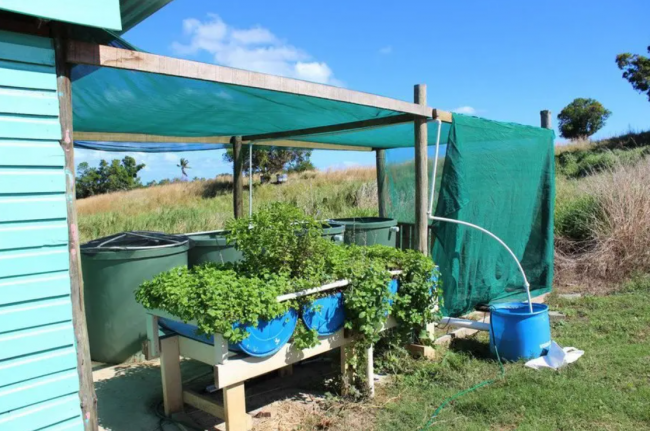
It’s the perfect combo of hydroponics and aquaculture. Nutrient solutions are replaced with nutrient-rich water from aquaculture tanks.
Microorganisms colonize the inert medium and they break down aquaculture waste products. Cleaned water is returned to aquaculture tanks.
You can grow herbs, watercress or microgreens on Styrofoam sheets floating in your aquarium tank. Amazing, right?
Source: www.diynatural.com

